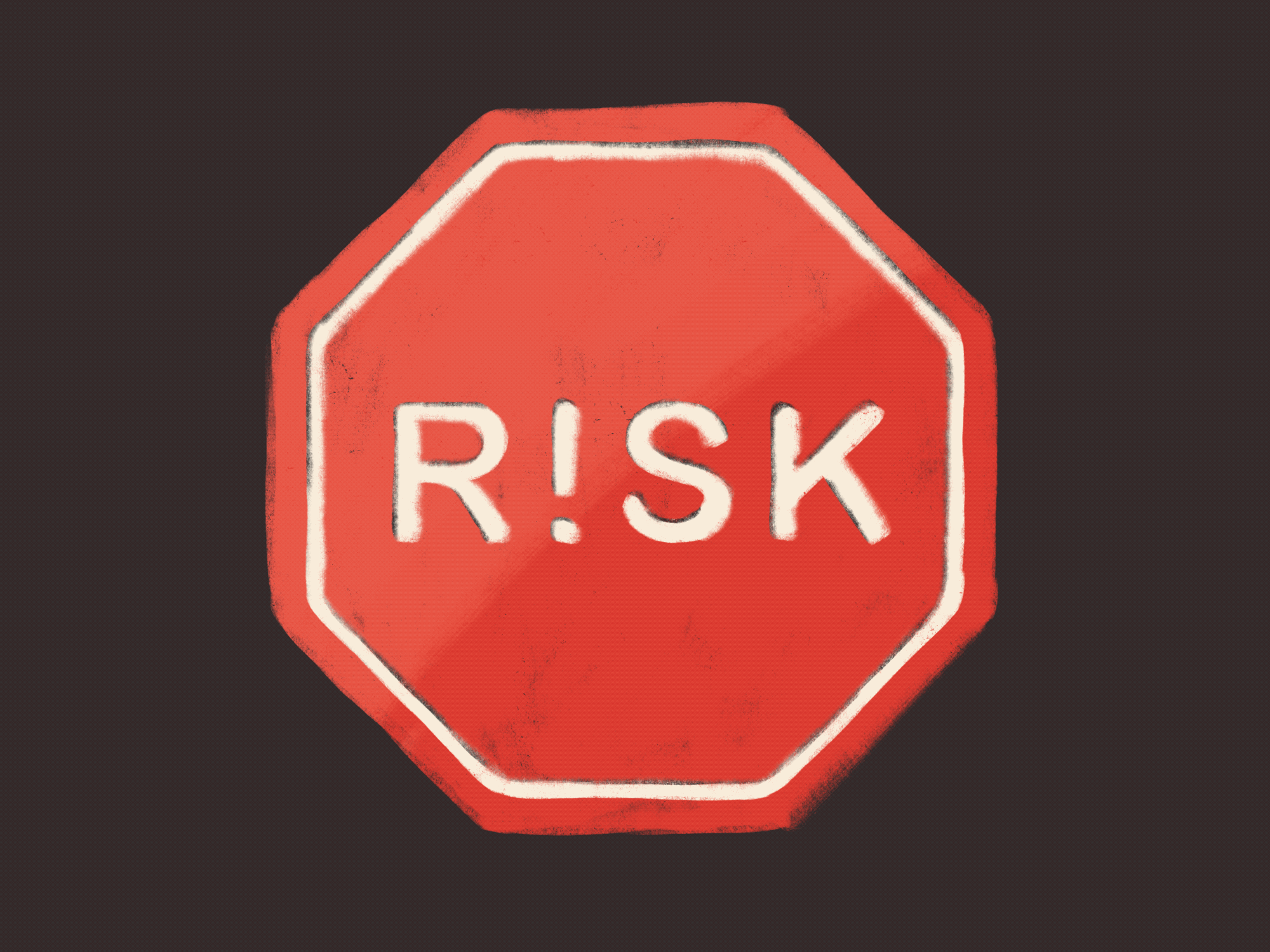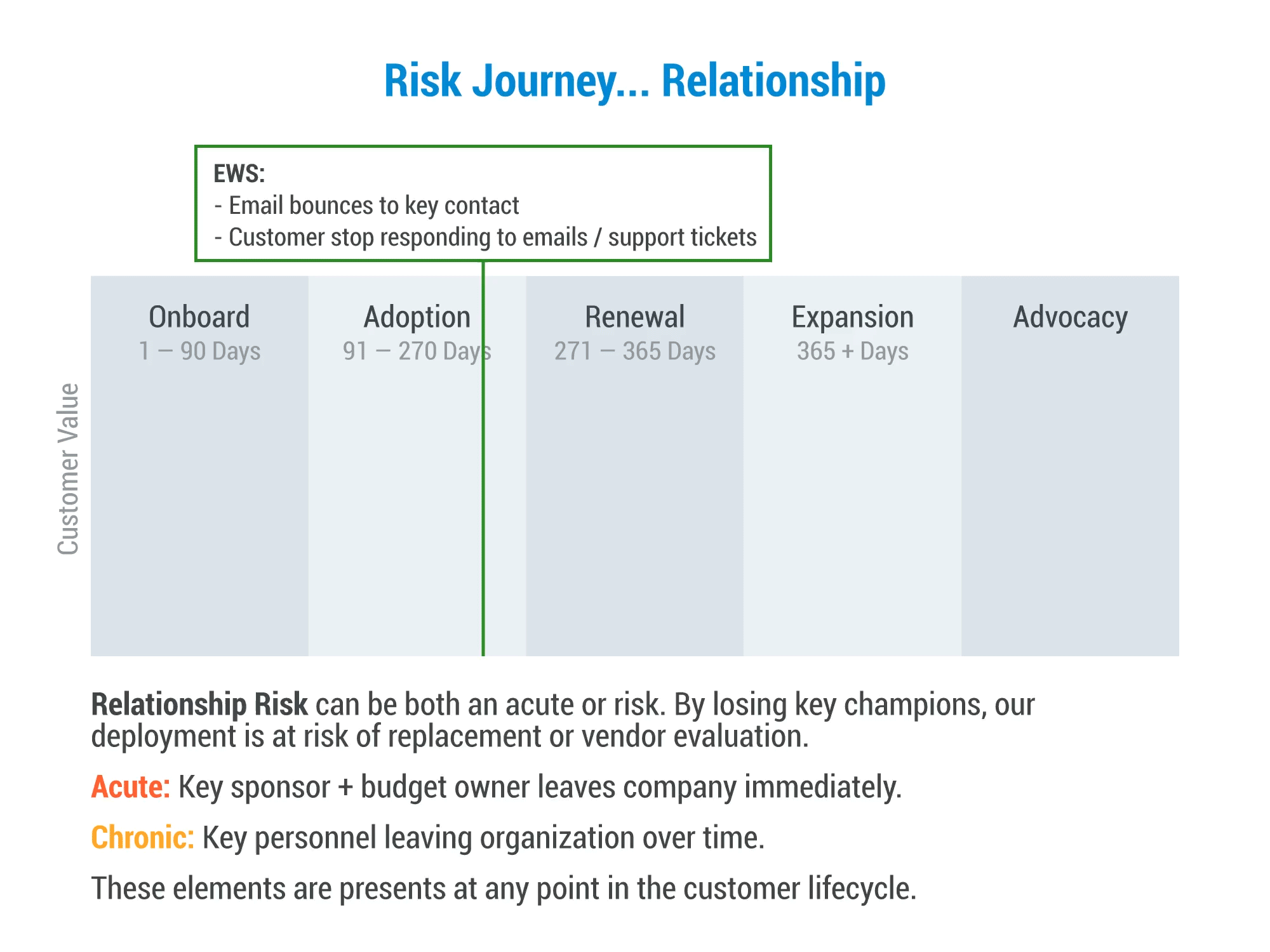Establish your Risk Management Framework Part 2
This is the second of a three part series on building out a Risk Management Framework for B2B SaaS Companies. Part I, covered here, explains the process by which companies can truly understand why customers leave their service. The series is broken out into three parts:
Part 1: Truly understand why your customers leave
Part 2: Build the Framework (this post)
Part 3: Drive action in mitigating risk (up next)
If you’ve taken action from the post in Part 1, you should have a concrete understanding of why your customers churn and reduce as backed up by qualitative and quantitative data. This is exactly what you’ll need to feed into this next post which talks about building the actual Framework. We’ll break that down into 4 actionable steps below:
Start with your Value Arc: what does a customer receiving value from your platform look like over time?
Define your risk types: describe your risk types, list the leading indicator metrics of risk, write out the early warning signs
Map each risk type against your value arc
5-10 risk types with descriptions, leading metrics, early warning signs
Let’s dive in.
Build your Value Arc
At this point you should have a solid foundation for why your customers choose to break-up with your service. Before going into mapping risk types against these reasons, let’s start with your company’s Value Arc. A value arc is the value your customers receive over time with your product or service. Based on your go to market, this value arc will be unique.
Do you have a trial or POC that increases value immediately upon purchase?
Is it a freemium model with the goal of going to an enterprise wide license like Slack?
Is it a developer orientated consumption model where users sign up and start using the service immediately like Twilio?
How about Launch models — is it a “Big Bang” style approach where everyone gets licenses immediately (Salesforce) or a more phased launch model that starts with a particular use-case and builds over time?
The answers to each of these questions should help you map out what your value arc looks like for your business. Here’s an example
Define Risk Types
Defining your risk types brings together all the research you’ve done in the previous post and combines that with the value arc you just created above. Your goal is to build a risk journey map like the example above for every one of the risk types you’ve identified in your research. A couple of considerations when creating these risk maps:
Less is more: Aim for no more than 5-10 risk types. Less than 5 and you may not be able to codify all the ways a customer can move into a risky state. More than 10 and you may overwhelm your CSMs and company with too many options for classifying risk in your customer base.
Chronic or acute: As seen above, determine whether the risk presents itself chronically or acutely.
Chronic risk: Small behaviors that, if accumulated over time, results in a churn or reduction of license later in the customer lifecycle. These risks are typically related to the product experience. Let’s look at an example: No single bug in your product will cause your customer to immediately churn, however, the accumulation of frustrating bugs over time may lead to decreased sentiment and therefore will result in a reduction or churn at time of renewal.
Acute risk: Risk that is brought on suddenly and immediately in the customer lifecycle. Let’s look at an example: Suppose the key champion spearheading your service’s rollout leaves the company. This type of risk is acute. Without a champion to act as an ambassador to the rest of your customer’s company, your implementation is immediately at-risk.
Regrettable or non-regrettable: A natural rate of attrition is expected for any enterprise saas vendor. This type of churn is typically seen as non-regrettable. No matter what your business or CS team would’ve done, the churn would’ve happened regardless. When thinking about your risk types, it’s good to understand what risks are regrettable (IE - you have a chance to save) versus those that are non-regrettable (you have no chance to save). An example of non-regrettable risk: Situations surrounding business viability — IE your customer is going out of business or downsizing.
Map Risk Types
The exercise above allows you to codify in 5-10 ways a customer becomes at-risk of churn or reduction. Putting the two elements together (Value Arc + Risk Type) you can design your risk maps. Each risk type should have it’s own risk map. These maps should explain the characteristics of that risk with the following information:
Risk description: A description of the risk type that familiarizes your CS team and company with the type of risk
Risk Arc: A Visual representation showing where in the customer lifecycle a risk can be identified
Regrettable / Non-regrettable: Is this risk something that can be saved by your company or CS team
Chronic or acute: To be explained in addition to the visual representation of the risk arc above.
Early warning signs: Quantitative and qualitative early data points that suggest a risk may be present in your account
Let’s look at an example of a common risk type, Relationship:
*EWS = Early Warning Signs
Finalize and Share the Framework
With your risk arcs mapped out, your descriptions defined, the early warning signs identified…. You have your Risk Management Framework. An approach that has taken both quantitative and qualitative data to build 5 - 10 ways a customer veers away from receiving value from your service.
This framework can be leveraged by your CS team to ensure a consistent vocabulary in describing what customers are at-risk, and for what reason.
This framework can be leveraged as a learning tool for new CSMs, but more importantly, taught at all new employee onboarding sessions.
With post 1 and post 2 complete, we’ll now focus attention on taking action after a risk is identified through playbooks.
Subscribe below for the next post in this series.
✌️



